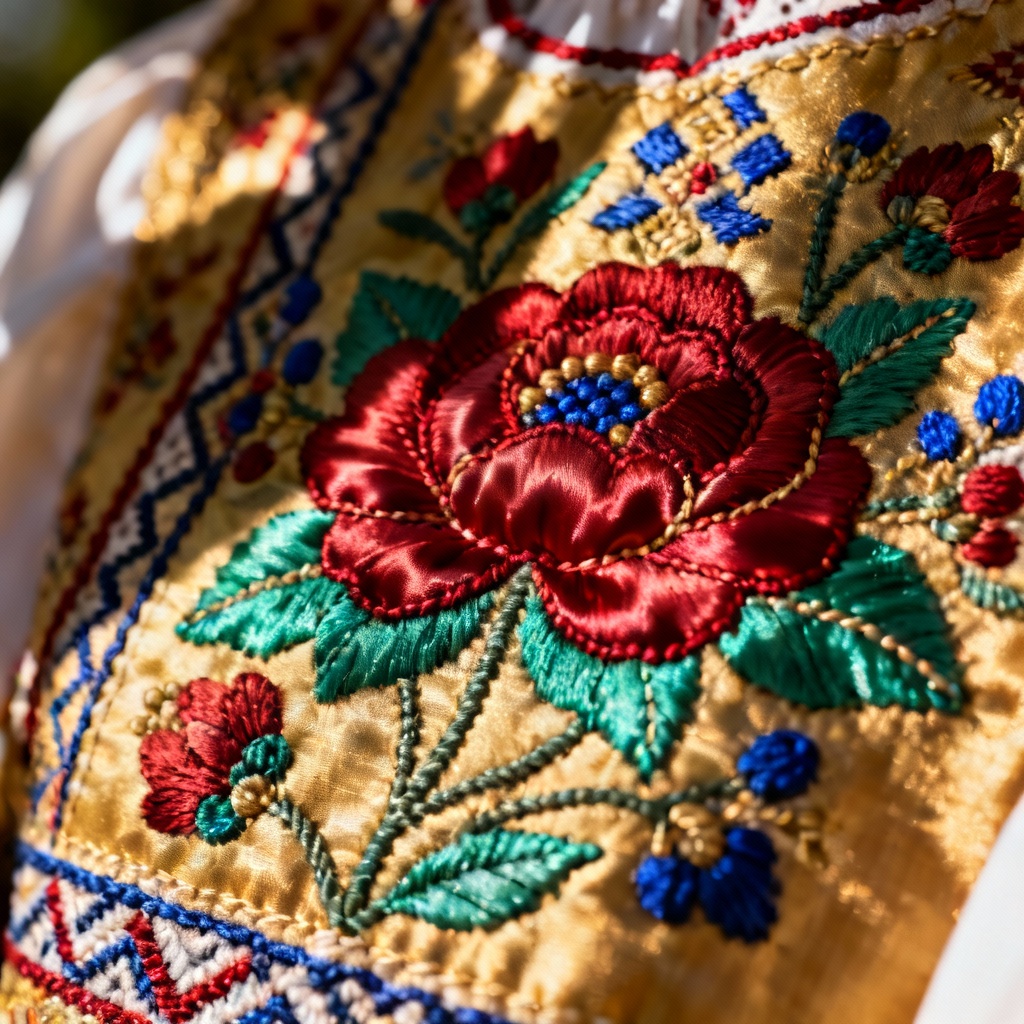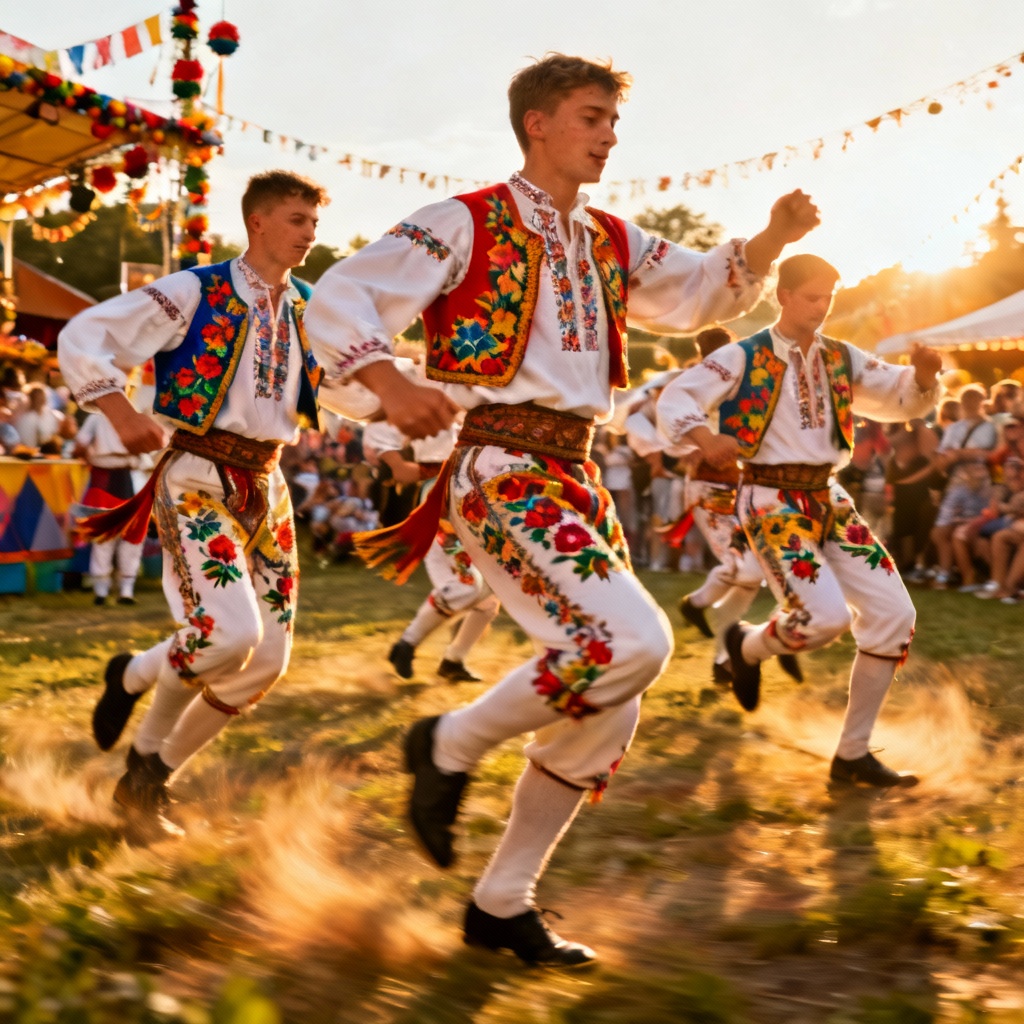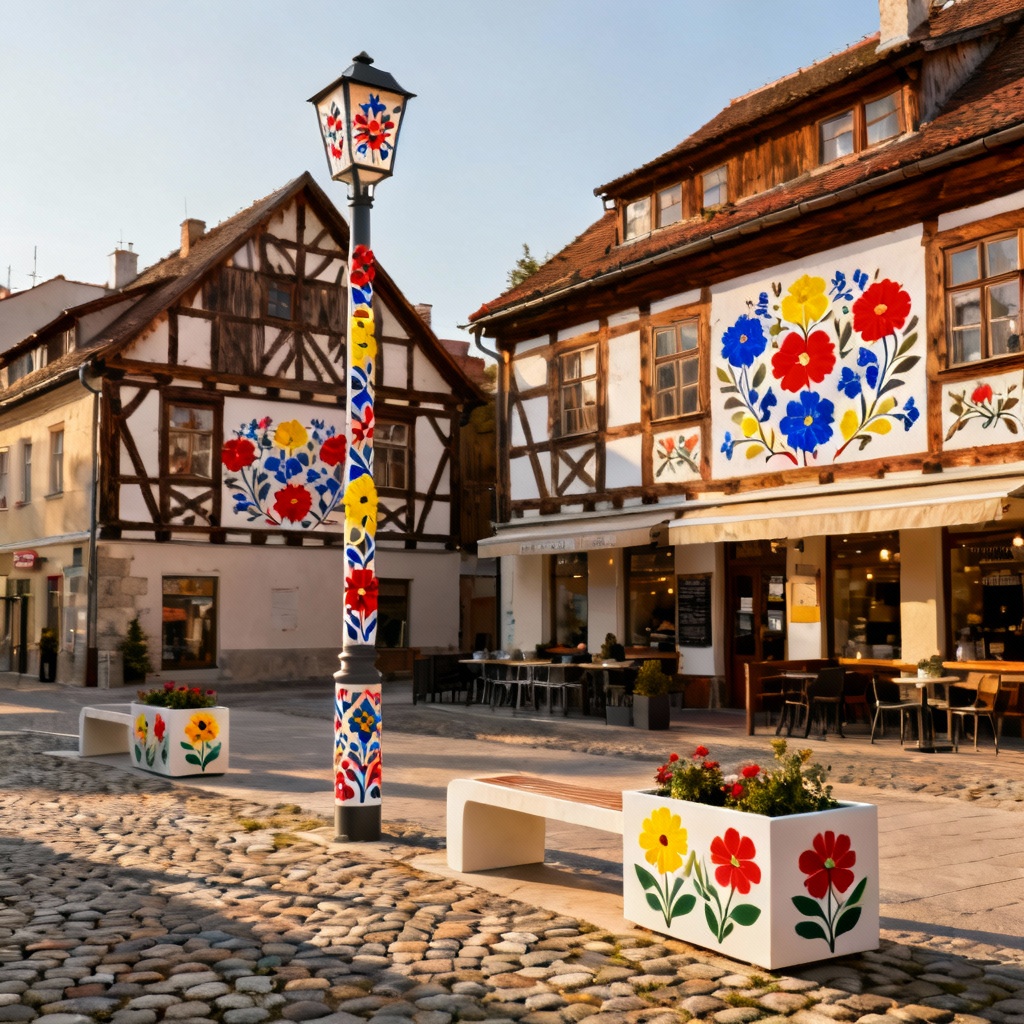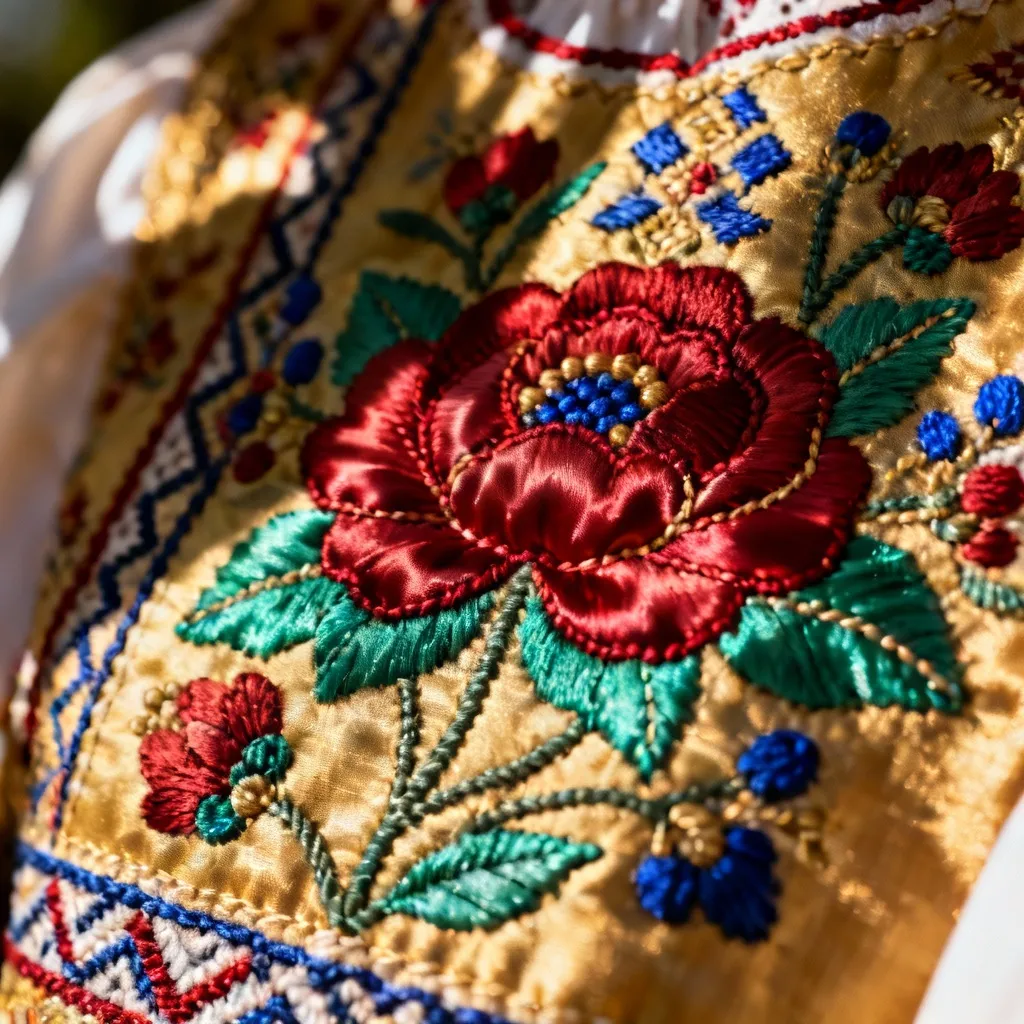Czech Folk Traditions: How Centuries-Old Culture Endures in Modern Society
For a nation nestled in the heart of Europe, the Czech Republic possesses a remarkably resilient cultural core. The country’s identity is shaped by the historical interplay between three major ethnographic regions: Bohemia, the West; Moravia, the East; and Czech Silesia, to the northeast. While city life across the country embraces modernity, the smaller villages, particularly throughout Moravia, actively serve as cultural custodians, continually celebrating their heritage through ancient rituals.
Czech folk traditions define this heritage—a living tapestry woven from pagan fertility rites, Christian holidays, and local history. These practices, costumes, and music provide an essential anchor for preserving Czech heritage, offering a sense of community, continuity, and belonging in an increasingly globalised world. The endurance of Czech culture today is largely a result of dedicated communal effort, vibrant public festivals, and focused educational initiatives that pass this artistic legacy down through the generations.
The Calendar of Celebration: Major Festivals and Annual Customs
Traditional Czech customs are tied directly to the agrarian and liturgical calendar, ensuring a cyclical revival of heritage with the turning of each season. These festivals are characterized by lively music, highly ritualized processions, and the proud display of local Czech costumes, or kroje.
Masopust (Carnival) and Easter (Velikonoce)
The period between Epiphany and Ash Wednesday is marked by Masopust, the Bohemian Carnival season, which traditionally peaks during the days before the Lenten fast begins. This is a final flurry of community balls, feasting (especially pig-slaughtering), and spirited door-to-door processions featuring revelers wearing elaborate, sometimes grotesque, masks.
Easter (Velikonoce) involves a blend of Christian significance and older pagan fertility rites celebrating the end of winter. A distinctly Moravian tradition is the girls' procession where an effigy of the Slavic goddess of death, Smrtka or Morana, symbolizing winter, is ritually paraded out of the village before being destroyed or tossed into water. On Easter Monday, men and boys engage in the tradition of pomlázka, where they symbolically "whip" girls and women with whips intricately braided from fresh willow branches, which is thought to confer health, strength, and youth for the coming year. In return for the symbolic thrashing, the girls reward them with beautifully painted eggs, or kraslice, and often a shot of local brandy, especially in Moravia.
The ultimate Moravian festival is the Ride of the Kings (Jízda králů), a spectacular tradition celebrated annually in Vlčnov (and rotationally in a few other Moravian Slovakian villages). This ritual, which takes place on the Feast of Pentecost in late spring, involves a young boy (the King), dressed in a lavish feminine costume and wearing a rose in his mouth, riding through the village on a decorated horse. The boy is accompanied by an entourage of young men—the King’s guards—some of whom wear women's clothing, as the legend suggests King Matthias Corvinus fled an old battle in disguise. This event, recognized by UNESCO, is also a rite of passage for the community's youth, demonstrating how Czech customs can be an initiation ceremony into adulthood.

Harvest and Patron Saint Festivals
As the agricultural year concludes, late summer and autumn are dominated by Posvícení—local harvest and patron saint festivals, which vary significantly by village and church name day. These community-centric events typically involve special ceremonial pastries, roast meats, and a dedicated 'dance under the maypole' in the town square.
The focus is firmly on celebrating the year’s bounty and the community's good health. People proudly wear their kroje (folk costumes), which are often family heirlooms passed down through generations. The high-quality materials and specific embroidery techniques used for a kroj are tied to the local area, making them an outward statement of regional and familial identity that reinforces Czech folk traditions.
Passing the Torch: Education, Craftsmanship, and Intergenerational Transfer
The simple desire for cultural memory is insufficient; enduring traditions require deliberate and proactive preserving Czech heritage efforts. Institutions dedicated to teaching these ancient skills form the critical backbone of modern Czech folklore survival.
Folk Dance and Music Schools
Across the country, numerous children’s and youth folk dance ensembles, such as those that keep the spirited Verbuňk dance alive, are flourishing. These youth groups actively master traditional arts, including instruments like the cimbalom (dulcimer) and regional styles of music. Instruction in authentic regional dance is essential not only for performances at Moravian festivals but also for understanding the regional identity encoded within each dance step. The Slovácko Verbuňk, for instance, is an improvised male dance that originated in military recruitment practices, demanding significant physical skill and passion to perform its varied movements.

Preserving Handicrafts
Traditional Czech customs involve a wealth of specialized handicrafts, skills that require focused educational transfer. Dedicated workshops serve to preserve techniques such as:
- Moravian Painted Eggs (Kraslice): Detailed lessons teaching wax batik, scratching, and straw decoration are popular ways to prepare for Easter. Visitors can experience this tradition first-hand at many open-air museums.
- Indigo Block Printing (Modrotisk): A UNESCO-recognised textile craft, the technique is kept alive in places like Strážnice through educational workshops where participants learn to design patterns and dye the fabric.
- Lace-making: The intricate art of Vamberk lace is maintained through specialized local firms and museums that not only display but also provide instruction, allowing a delicate craft to transition into a commercially viable and educational pursuit.
The Role of Museums and Skansens
Ethnographic museums and open-air folk architecture (skansens) play a vital role as physical preservers of historical life and its materials. The Wallachian Open Air Museum (Valašské muzeum v přírodě) in Rožnov pod Radhoštěm, one of the oldest and largest skansens, maintains entire villages of relocated or replicated timber-framed houses, farmsteads, and mills. By hosting seasonal events and practical craft demonstrations, they ensure that the heritage isn't just displayed, but experienced, actively encouraging intergenerational transfer by welcoming families and schools.
Tradition in the Modern Age: Media, UNESCO, and Tourism
For Czech culture today to thrive, it must successfully navigate modern mechanisms like global platforms, governmental protection, and creative reinterpretation, rather than relying solely on village boundaries.
UNESCO Intangible Cultural Heritage
Formal international recognition significantly elevates the status and preservation of cultural practices. Two primary Czech folk traditions have received UNESCO designation, cementing their importance:
- The Slovácko Verbuňk dance (Inscribed 2005).
- The Ride of the Kings (Jízda králů) (Inscribed 2011).
This designation helps local communities secure funding, enhances global recognition, and, crucially, encourages greater participation by citizens proud to protect their country’s cultural 'masterpieces,' thus significantly supporting Czech tourism.
Digital Preservation and Media
Digital technology acts as a new repository and disseminator of folklore. Local and national cultural institutes utilize online archives and social media to document costumes, traditional songs, and historical Czech customs, ensuring access for future scholars and the global Czech diaspora. Moreover, modern independent film and video platforms often capture local events with cinematic flair, reaching contemporary audiences far beyond the village square.
Modern Reinterpretation
Tradition is dynamic, not static. Contemporary Czech designers frequently draw upon rich folk motifs, such as the elaborate Moravian floral embroidery designs, to create modern clothing and decor. This revitalization gives ancient patterns a new relevance, ensuring their continuous presence in the country's aesthetic language. Similarly, modern folk-inspired musicians blend traditional instruments and melodies—such as the distinctive cimbalom or Moravian harmonies—with modern soundscapes, proving that Czech folk traditions are not merely relics but sources of vibrant, continuous artistic inspiration.

Conclusion: A Living Heritage
The endurance of Czech folk traditions is a powerful testament to the community's deliberate efforts to look forward by preserving its past. Key sustaining factors are evident across the Czech landscape: the communal enthusiasm of annual Moravian festivals, strong institutional support from museums and dance schools facilitating intergenerational transfer, and strategic use of international bodies like UNESCO.
These vibrant traditions and deep-rooted Czech customs ensure that the nation’s cultural identity is a living, breathing entity—not merely a museum piece. The intricate embroidery of a Czech costume and the thunder of a festival drum echo the spirit of a resilient people. For those looking to connect with the authentic heart of the nation, exploring the next Posvícení or an authentic folk-dance event offers a genuinely engaging encounter with Czech culture today. Seek out a local event, learn a traditional craft, and play an active role in keeping this heritage thriving.
